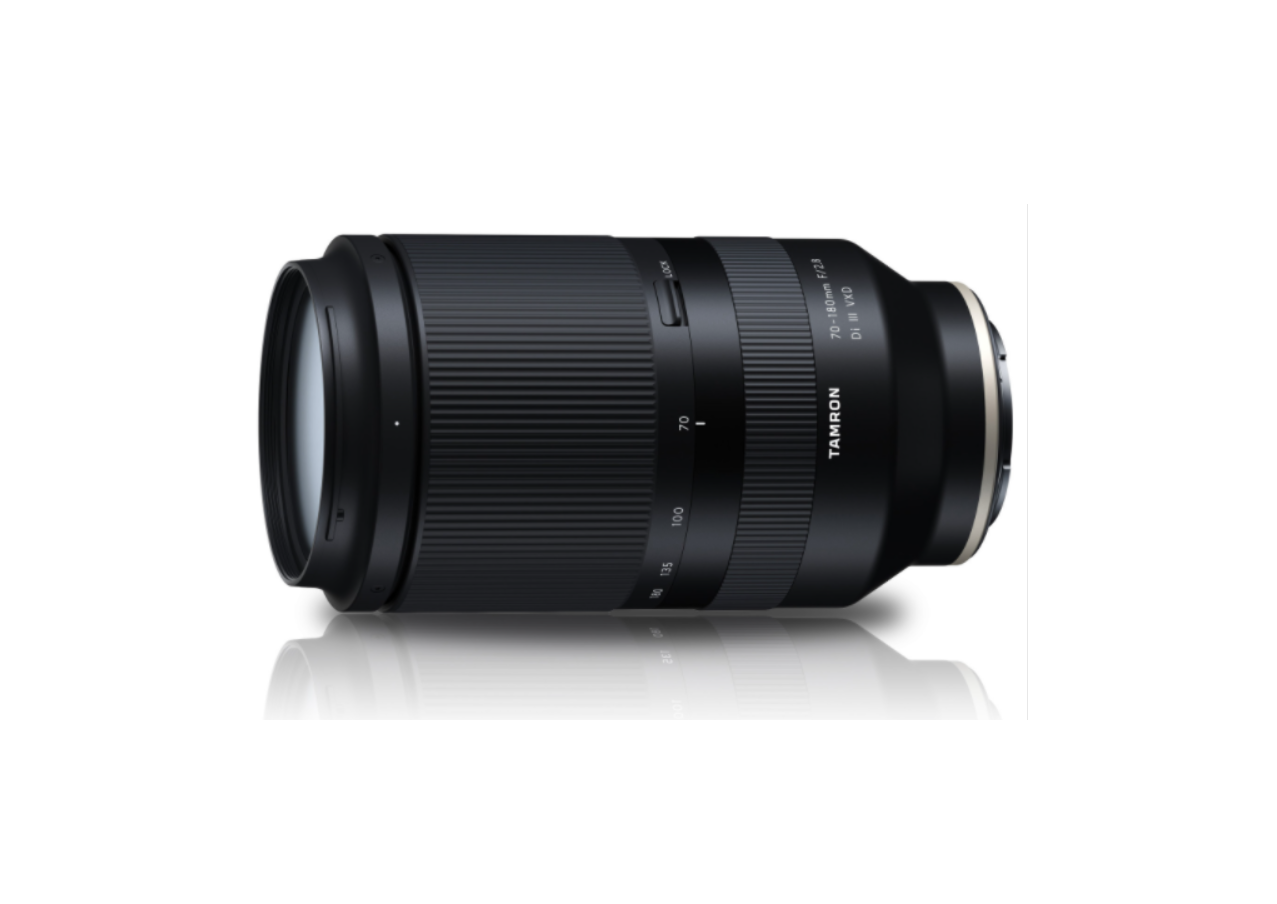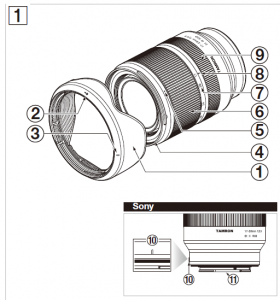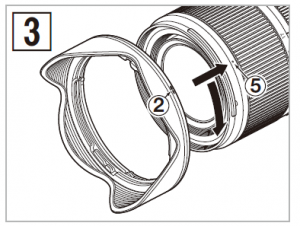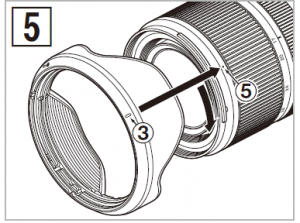TAMRON Lens Sony E Mount Owner’s Manual
Lens Sony E Mount
![]() * The CE Marking is a directive conformity mark of the European Community (EC).
* The CE Marking is a directive conformity mark of the European Community (EC).
![]() The EEC Conformity Report applies to the Council Directive 2014/30/EU, 2011/65/EU and is used by Tamron Co., Ltd., manufacturer of this product.
The EEC Conformity Report applies to the Council Directive 2014/30/EU, 2011/65/EU and is used by Tamron Co., Ltd., manufacturer of this product.
Thank you for purchasing the Tamron lens as the latest addition to your photographic equipment. Before using your new lens, please read the contents of this Owner’s Manual thoroughly to familiarize yourself with your lens and the proper techniques for creating the highest quality images possible. With proper handling and care, your Tamron lens will give you many years of photographing beautiful and exciting pictures
 Explains precautions that help to prevent
Explains precautions that help to prevent Explains things you should know in addition to basic operations
Explains things you should know in addition to basic operations
PART NAMES (Refer to Fig. 1)
① Lens hood ⑦ Focal length scale② Hood attaching alignment mark ⑧ Focal length mark③ Hood locking mark ⑨ Focus ring④ Filter ring ⑩ Lens attachment mark⑤ Hood release mark⑥ Zooming ring
MAIN SPECIFICATIONS
Model A046
Focal Length 17-28 mmMaximum Aperture F/2.8Angle of View 103˚41′ – 75˚23′Lens Construction 11/13Minimum Object Distanc(e MOD) 0.19 m (7.5″) (Wide) / 0.26 m (10.2″) (Tele)Maximum Magnification Ratio 1:5.2 (Wide MOD) / 1:6 (Tele MOD) Filter Sizeø 67 mmLength 99 mm (3.9″)Diameter ø 73 mmWeight 420 g (14.8 oz)Lens Hood HA046
 Length: From lens front to mount surface.
Length: From lens front to mount surface.- Features and appearances of lenses listed in this owner’s manual are subject to change without notice
ATTACHING AND REMOVING THE LENS
Remove the rear cap of the lens. Align the lens attachment mark ⑩ and mounting mark on the camera, and then insert the lens.Turn the lens clockwise until it locks.To remove the lens, turn the lens in the opposite direction while pressing the lens release button on the camera
SWITCHING FOCUS MODE (Ref. Figs. 1, 2)
Select the desired focus mode on the camera.For manual focusing, turn the focus ring ⑨ to acquire the desired focus. For details, please read the instruction manual of your camera.
ZOOMING (Ref. Figs. 1, 2)
Turn the zooming ring ⑥ to adjust the focal length (Zoom position) to a desired position.
LENS HOOD (Ref. Figs. 1, 3 – 5)
A bayonet-type lens hood ① is provided as standard equipment.We recommend shooting with the hood properly attached because the lens hood eliminates stray light that may affect the picture.
■ Using the lens hood (Ref. Figs. 3, 4)
Align the hood attaching alignment mark ② of the hood with the hood release mark ⑤ of the lens.Rotate the hood ① in the direction of the arrow until the hood locking mark ③ meets the hood release mark ⑤
■ Stowing the lens hood (Ref. Fig. 5)
You can stow the lens hood ① by attaching it in reverse.Align the hood locking mark ③ of the hood with the hood release mark ⑤ of the lens. Rotate the hood ① in the direction of the arrow until the hood attaching alignment mark ② meets the hood release mark ⑤
![]() Be aware that the perimeter of the photographed image may be darkened if the hood ① is not attached properly
Be aware that the perimeter of the photographed image may be darkened if the hood ① is not attached properly
PRECAUTIONS WHEN SHOOTING
- An internal focusing (IF) system is employed to reduce the minimum focus Because of this, the angle of view may be wider than that of lenses using other focusing systems when shooting at a distance less than infinity.
- When using the flash, remove the lens hood and stand as far as possible from the Depending on the lens and flash used, the lens may block the light from the flash and darken the bottom of the screen.
- Differences in the display systems of cameras may result in the display of values different from the maximum and minimum aperture values in the specifications. This is not an indication of an error
TO ENSURE LONG-TERM SATISFACTION
- Remove dust and soiling on the lens by using a blower or soft Do not touch the lens with your fingers.
- The lens surface of the front element has been coated to prevent water and oily substances from Since it will repel water, do not use lens cleaners or other substances but only a dry cloth to clean the front element.
- To clean the lens surface of the rear element, lightly wipe it starting from the center with a commercially available lens cleaning paper, a clean cotton cloth or a microfiber cloth (cleaning cloth for glasses, ) soaked in lens cleaner. Do not use a silicone cloth.
- Clean the lens barrel using a silicone cloth. Never use benzene, thinner, or other organic solvents.
- Mildew is a major problem for Store your lens in a clean, cool, and dry place. When you store the lens in a lens case, store it with a commercially available drying agent and replace the drying agent occasionally.
- Do not touch the lens-camera interface If dust or stains cause contact problems, signals are not transmitted properly between the lens and camera, and malfunctions may occur.

Disposal of Electrical and Electronic Equipment in Private Households. Disposal of used Electrical & Electronic Equipment (Applicable in the European Union and other European countries with separate collection systems)This symbol indicates that this product shall not be treated as household waste.Instead it shall be collected separately for the recycling of electrical and electronic equipment.If the new products are purchased, this product might be handed over to the distributor or the collection system of waste electrical and electronic equipment eventually.By ensuring this product is disposed of correctly, you will help prevent potential negative consequences for the environment and human health, which could otherwise be caused by inappropriate waste handling of this product or components of this product.If this product is disposed illegally, it might cause a possibility of penalties. For more detailed information about recycling of this product, please contact your local Civic Office, your household waste disposal service or the shop where you purchased the product.
Precautions for Safe Use of Tamron Lenses
For safe operation be sure to carefully read the “Precautions for Safe Use of Tamron Lenses” and the manual before using the product.After reading them, store them in a place where they can easily be reviewed whenever needed. Caution instructions are divided into the following two categories according to the degree of danger involved.
 WARNING
WARNING
This indicates instructions which if not followed or if performed incorrectly could lead to death or serious injury
- Do not view the sun or other strong light source directly through the lens or through a camera while using thisand/or the camera, and possibly cause the lens and/or camera to ignite
- Do not dissemble, repair, or modify the This could damage the lens or camera.
- Keep the lens out of the reach of smallThere is a risk of injury if the lens is dropped or falls down.
 CAUTION
CAUTION
This indicates instructions which if not heeded or if performed incorrectly could lead to bodily injury or physical damage
- Do not place lens in direct sunlight or leave it in an extremely hot place such inside a Doing such could damage the internal parts of the lens or cause a fire.
- Always attach the lens cap whenever the lens is not in
- When attaching the lens to the camera, ensure that the lens has been properly attached to the camera and firmlyIf the lens is not attached properly, it could be difficult to remove or it could fall off causing damage or injury.
- Do not use this lens for any application other than
- Do not transport the lens while it is still attached to a tripod.
Read More About This Manual & Download PDF:
[xyz-ips snippet=”download-snippet”]







